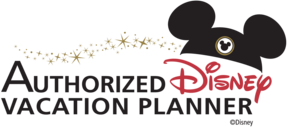for the record
the musical horns are a novelty
the actual ship's whistle must meet certain standards and is used in accordance with the Navigational Rules of the Road - an internationally recognized set of rules to avoid collisions at sea (aka the COLREGS)
On our early cruises on
DCL, when departing Port Canaveral and passing the Glen Cheek restaurants (Grills, Rustys & Squidlips) the ships would sound the musical horns repeatedly for the enjoyment of the diners ..... in the same way as many ships departing Port Everglades sound their whistles for fun when passing the condos close to the entrance at that port. TECHNICALLY, there is a legal risk here if a collision were to happen and the other party claimed "I was confused by signals not in COLREGS" or "came from a funny whistle."
Enter the concept of 'noise pollution' .... not everyone that lives close to the ports loves the sounds of those horns. There are times the (official) horns MUST sound as signals IAW the COLREGS .... and there are times they are just for fun.
At CASTAWAY the ships can toot their patoots to their - and the pass's - content cuz there is seldom another ship or person within hearing range.
{ don't follow? well consider this, if the ship is in fog, wanna guess which ship's horn will be sounding every two minutes? It won't be singing a song . . . }
++++++++++++++
on a sea day .... a ship tradition is to announce to the Captain
"the approach of noon" and ask permission to test the ships alarms and whistles
on my government vessels this was a scripted procedure where the navigator had prepared the noon position report and the quartermaster a weather report, the gunner reported daily inspection of magazines; presentation of this report was followed by striking 8 bells (noon) and testing the alarms and whistles
Many cruise ships preserve this tradition on a sea day with the Captain providing a position and weather report and sounding the ships whistle (s).
+++++
historical bit: remember that in the early days of sailing there was NO reliable time piece and navigation was at best a lot of guessing. But early on a fact was uncovered that a simple math calculation applied to the height of the sun above the horizon at its highest point of the day determined LATITUDE. The highest point the sun reached happened mid day. The exact time the sun reached this highest point became "noon" on early ships and was an important navigational event. The master would be called and advised "noon approaches" & watch the sun rise .... measure the highest point of the rise on his sextant and then announce "make it noon" for that day (or supervise his midshipmen doing the same). The calculation for lat' by "local apparent noon" does not require time but established a base point for early sailing ship's time each day. The change from day to day was easily absorbed by the sand glasses used b4 the invention of reliable chronometers.




